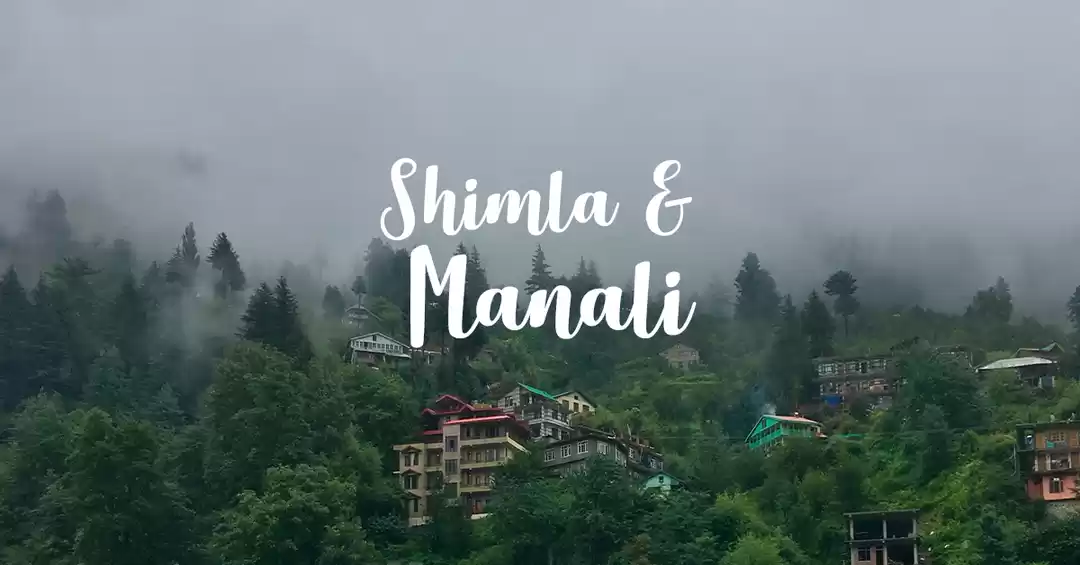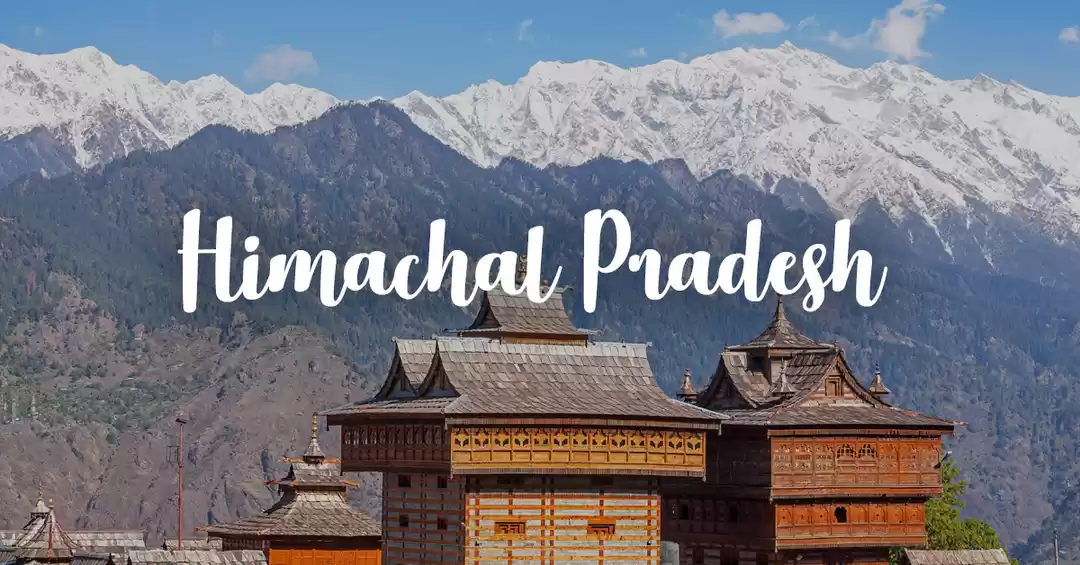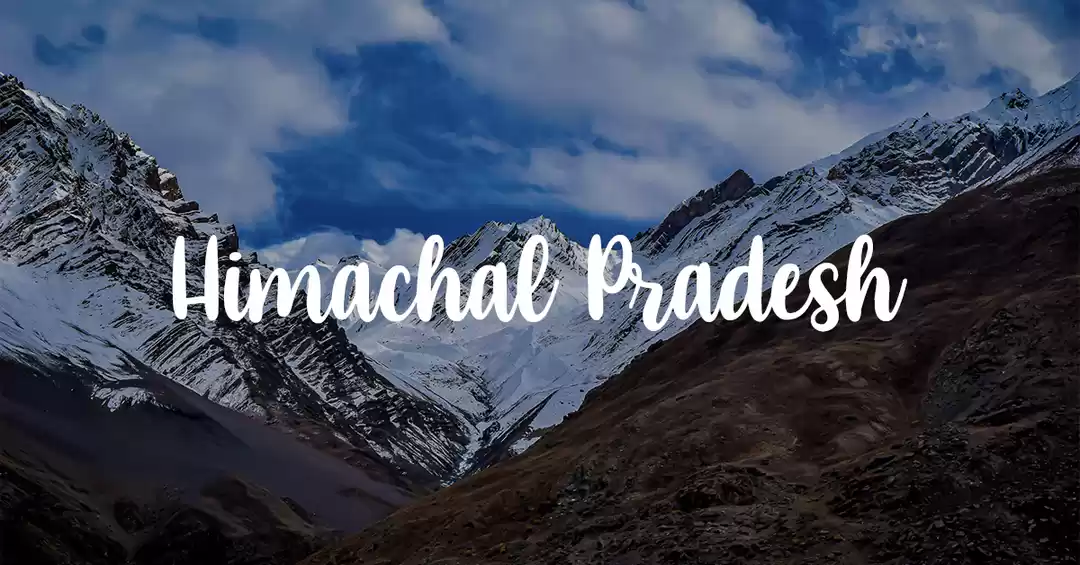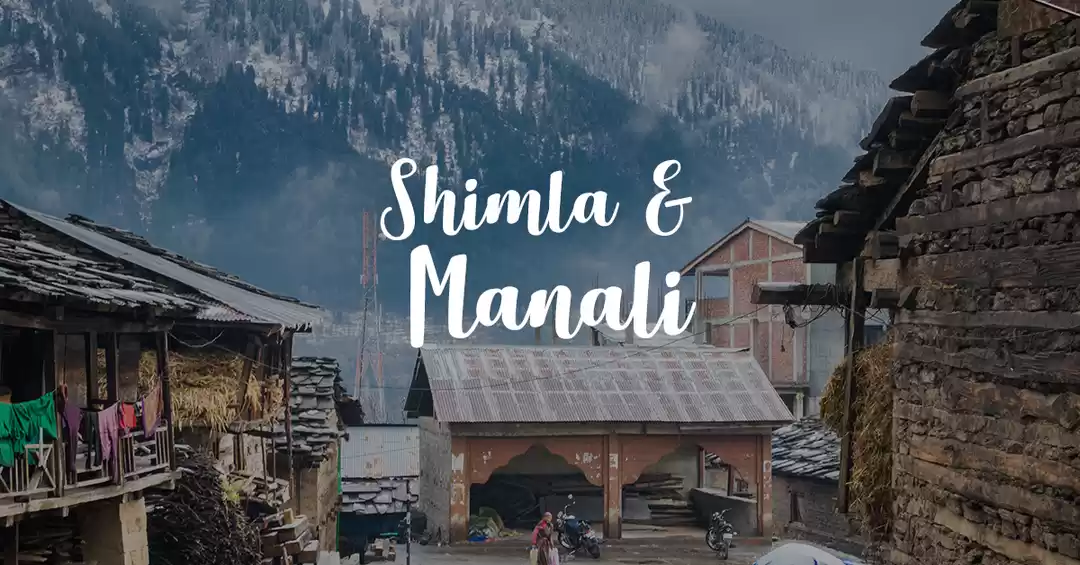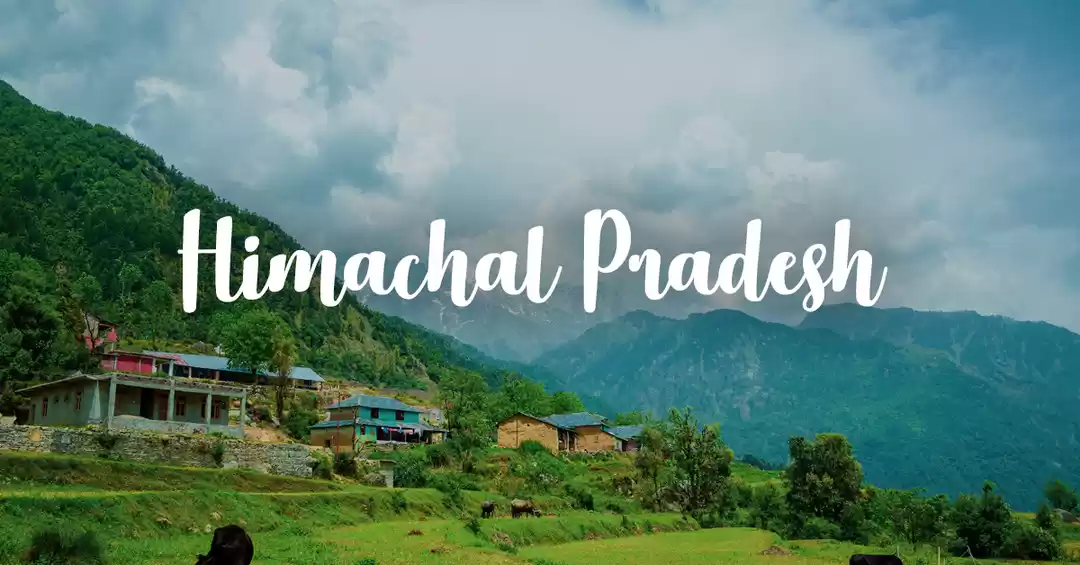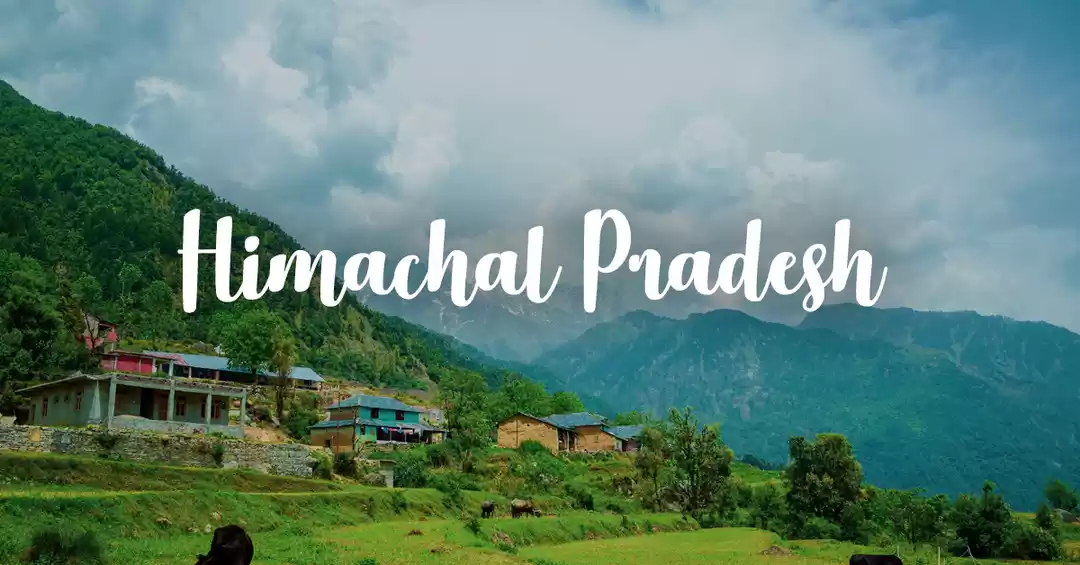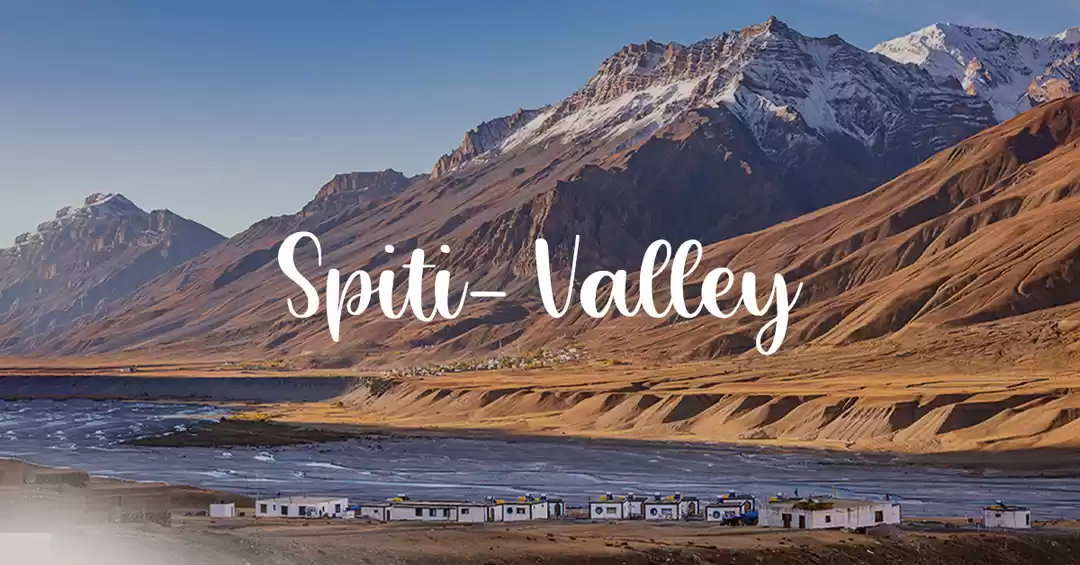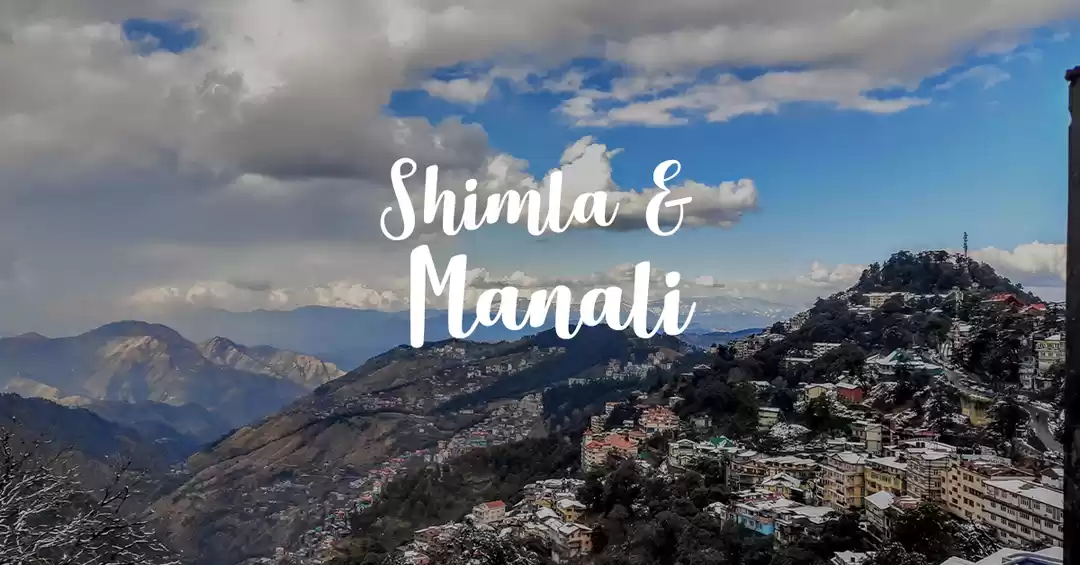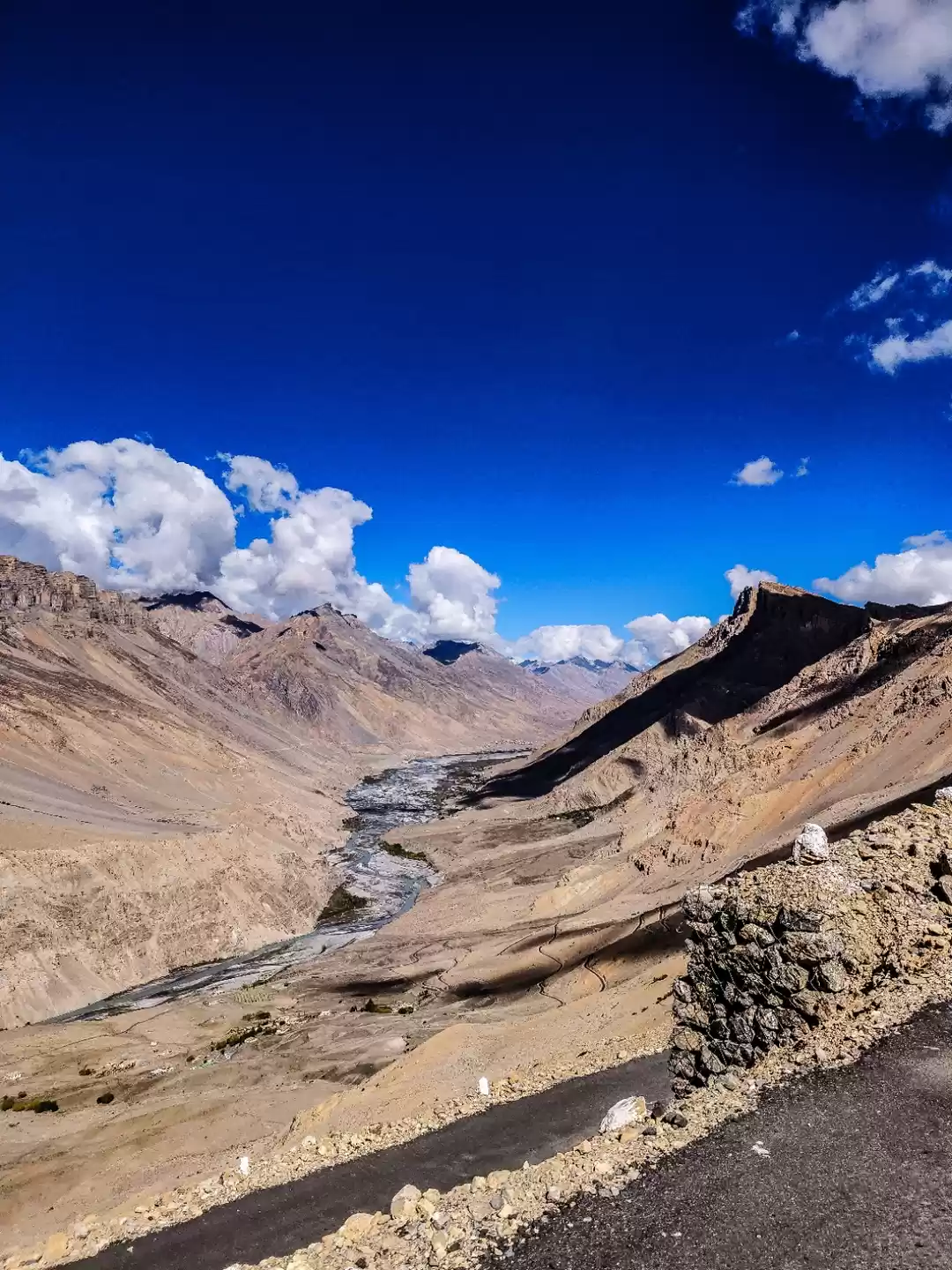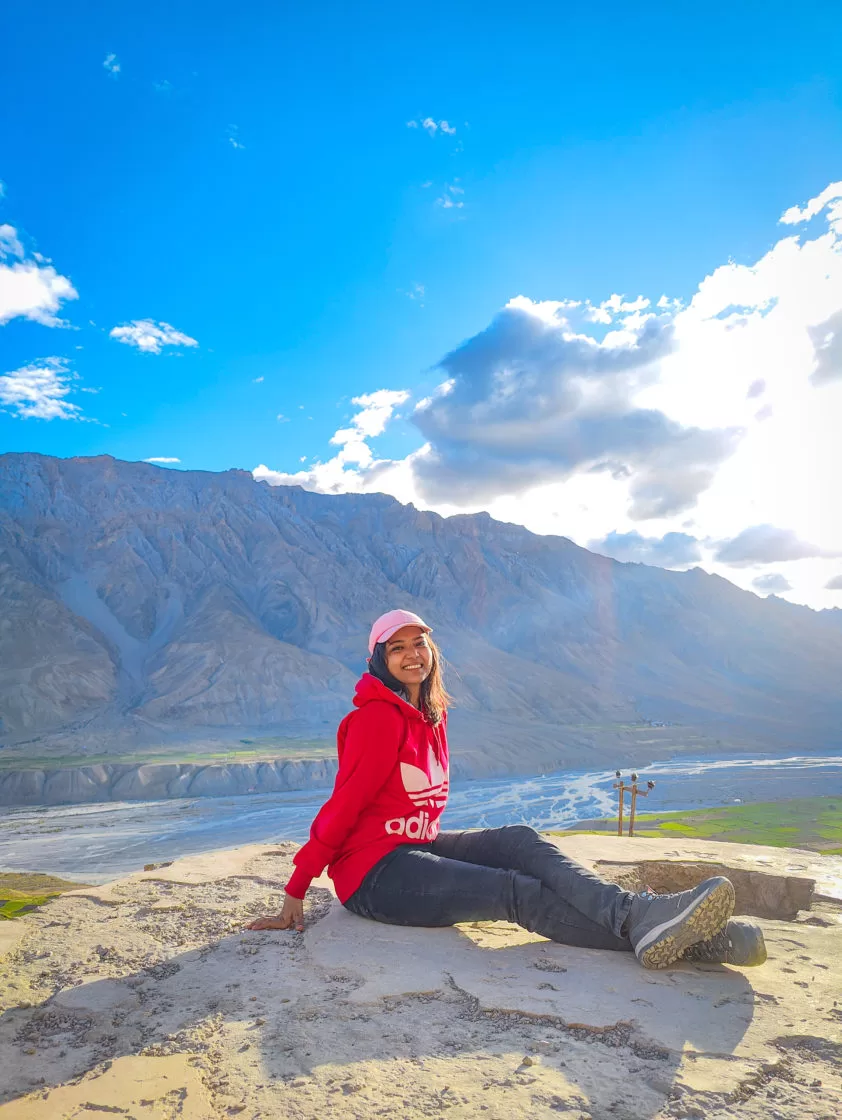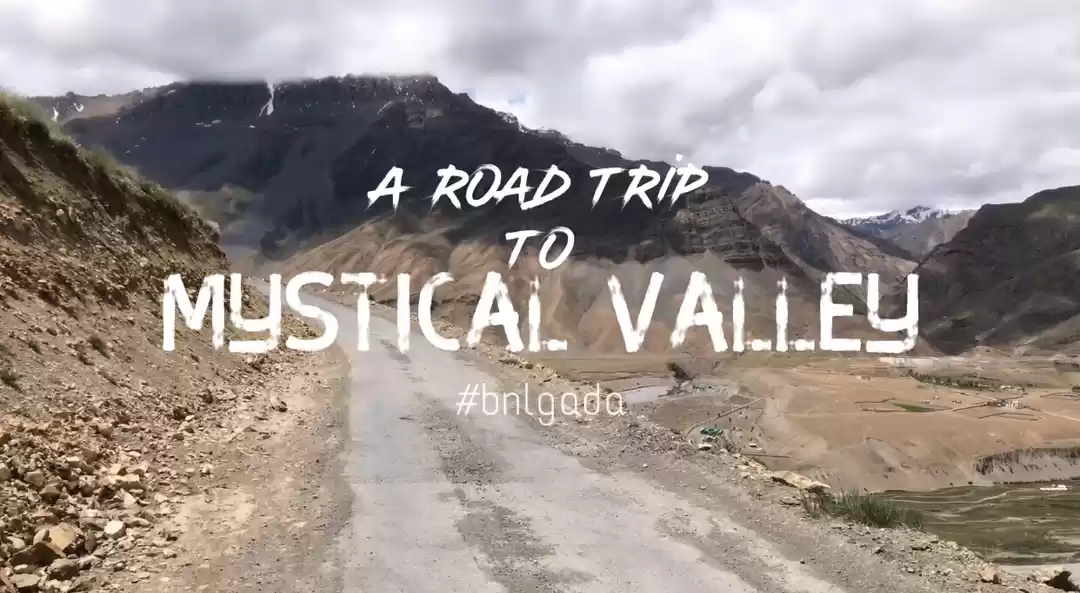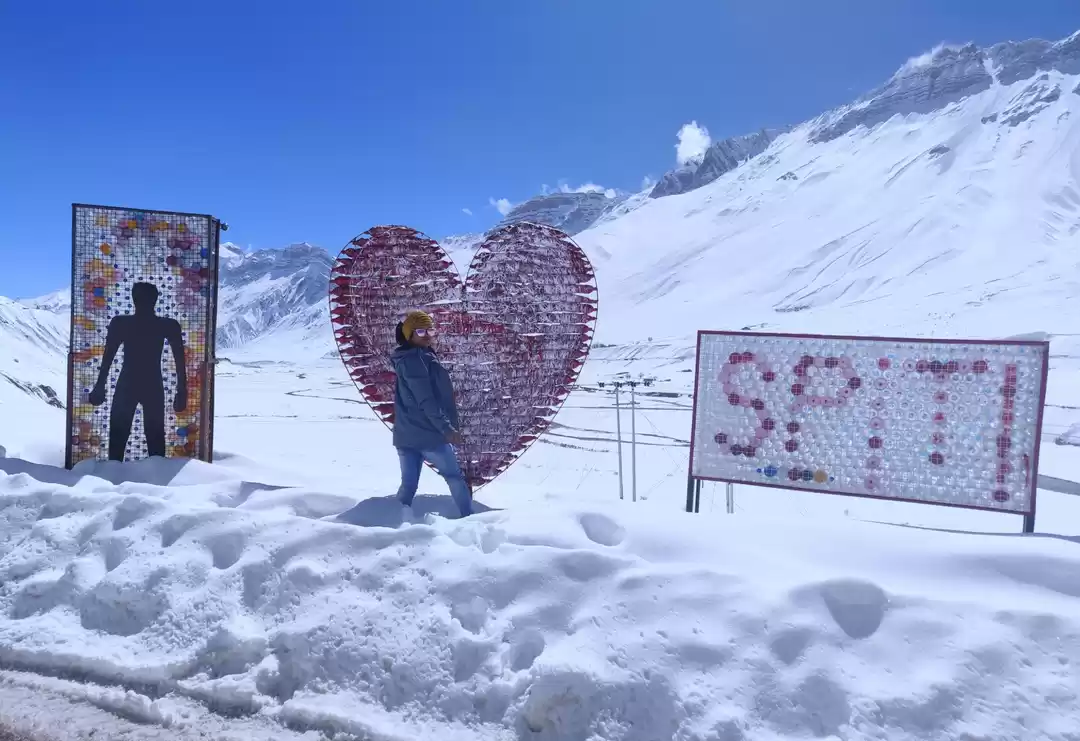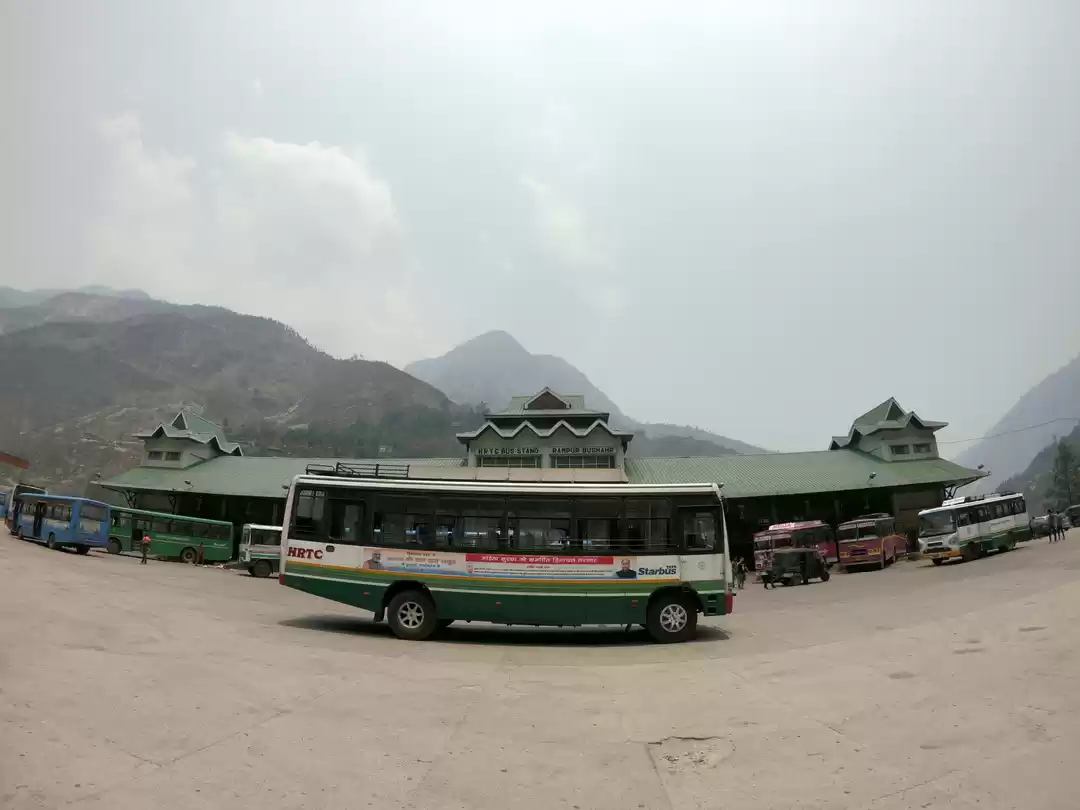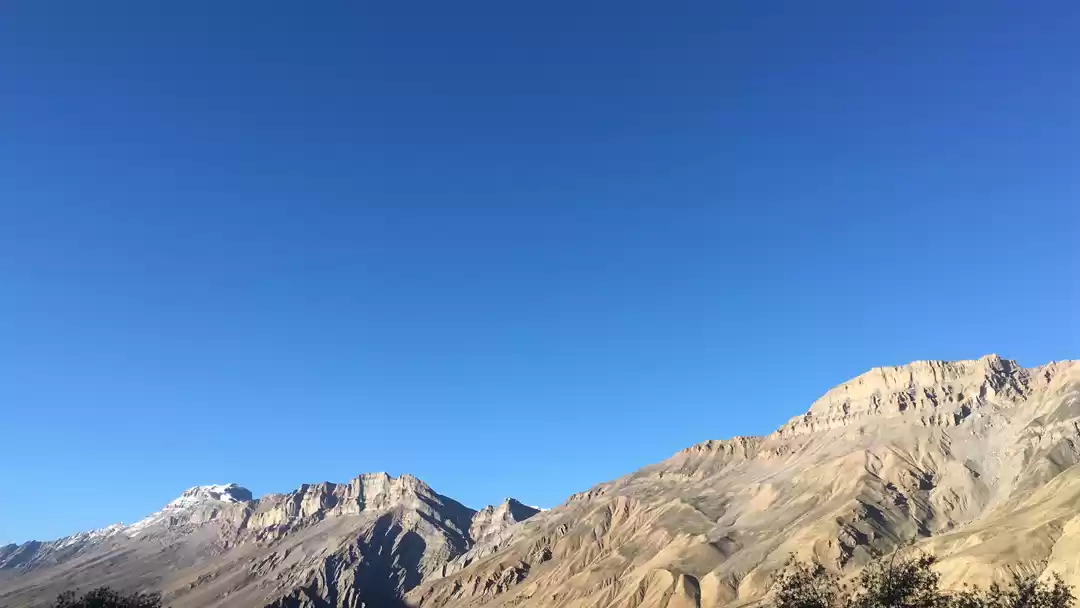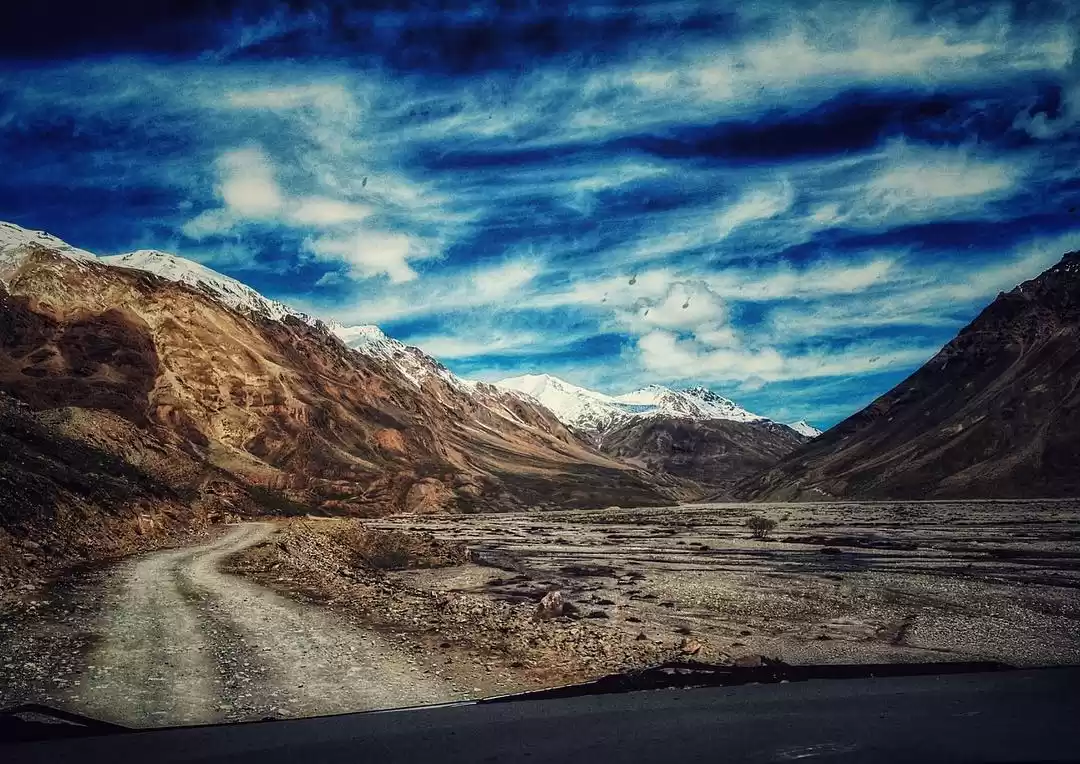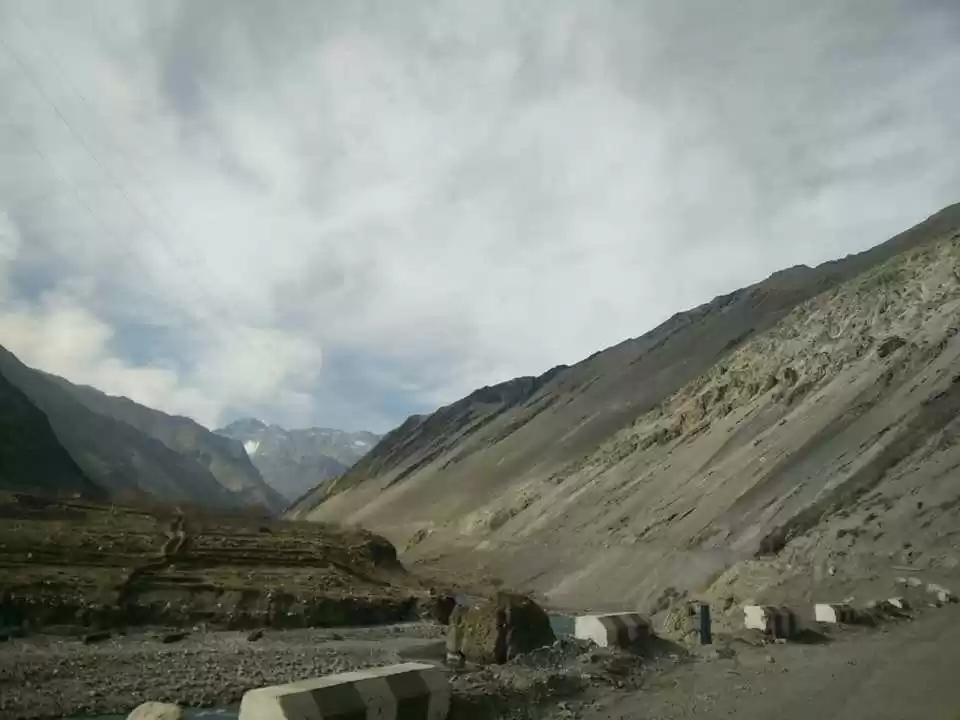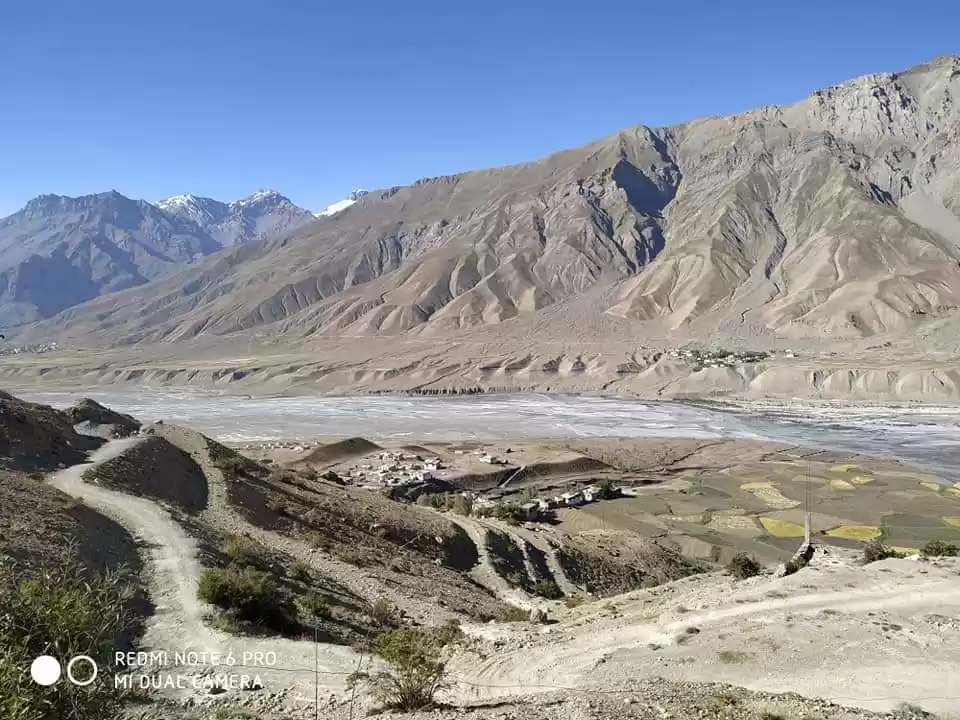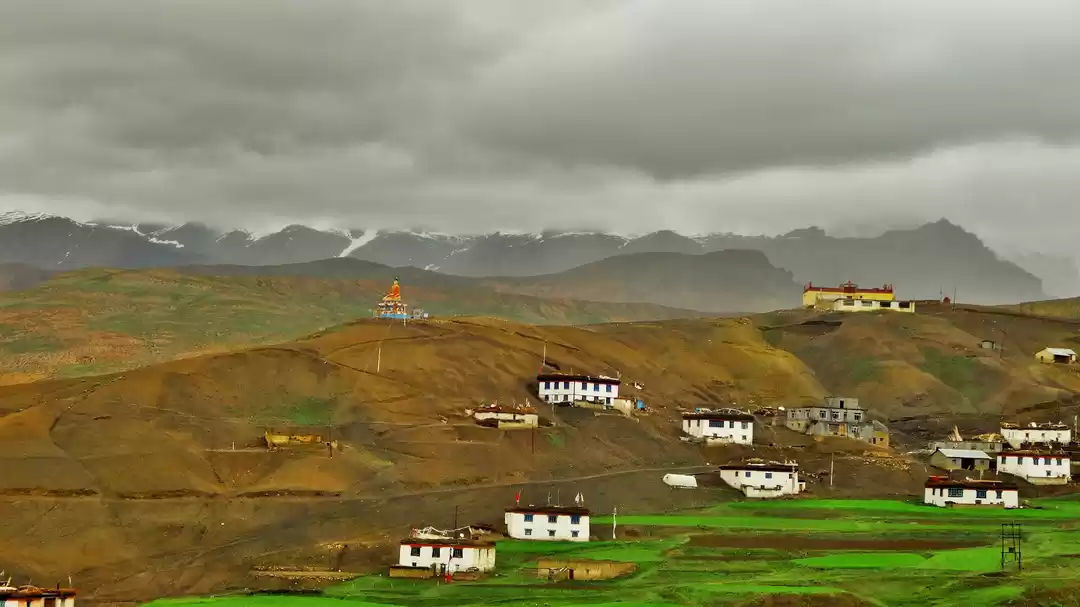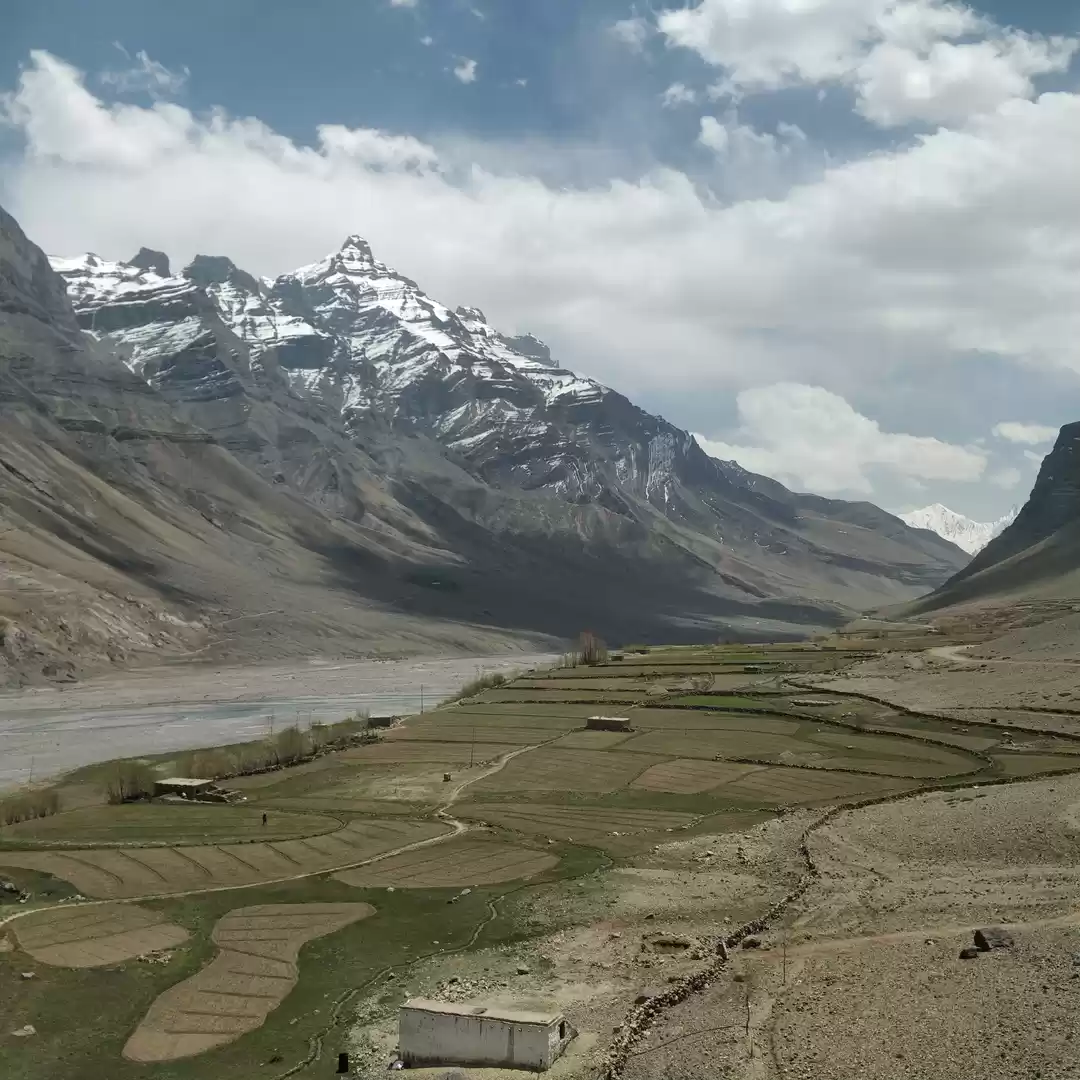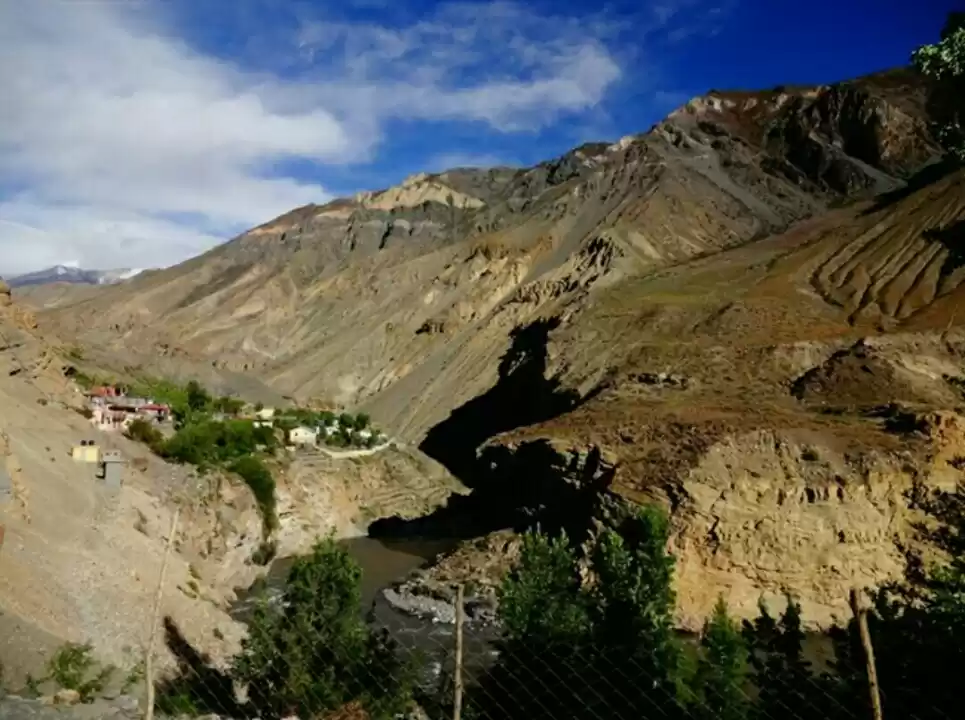
It all began with a WhatsApp group, as it always does. Forgive this trip it's humble beginnings, it still managed to allow us strange glimpses into beautiful lands and unknown territories. At the end of the day, isn't that what any good trip is supposed to do - show you something new?
The four of us, all cousins, began this trip by deciding that we'd "figure it out" in Delhi. So day 1, two of us landed in Delhi and made a little base camp out of our airbnb [cost: 1500 for 4 people for a night] in Lajpat nagar. Prior to the trip, our itinerary had spanned over beautiful and enticing locations of Himachal Pradesh like Tosh, Kasol and McLeodganj. But with the growing news of rains, we decided that it was time for the plan to change. With some last minute phone calls, and a lot of googling, we realised that one of the most rain-free areas of Himachal Pradesh lay within East Himachal - the Spiti valley. While the commonly used route used to get in, and out, of Spiti was the 'Spiti Circuit', it is only accessible to travellers for a limited amount of time (until September) because the road from Kaza - Rohtang - Manali closes due to harsh weather (this road is still accessible, but with a special pass). At the of a very (and I mean, very) long discussion, we decided to follow through on the Spiti circuit by getting to Shimla, then continuing to Kinnaur Valley, following the road to Spiti and Pin Valley and exploring Chandrataal before returning to Manali and then Delhi. A 10 day plan, a very hectic schedule and 4 idiots who were more than happy to travel by bus - that's the closest thing we had to a plan.

We caught a late night bus from Delhi to Shimla [check redbus, cost: 800 per person], knowing that our only priority in Shimla was to momentarily stop for tea and to get on another bus to Sangla. The real trip was only going to begin from Kaza, but until then, we hadn't heard nor seen any indication of the true Himachal Pradesh. Get this, I'm not the most fussiest traveller in the world. But I'm also a pretty priveleged little girl. And the idea of constantly living in buses, didn't really entice me. But what can one do when your cousins are strong-arming you into getting into that Sangla bus that's going to take 6hrs to get to a bathroom?
I'll tell you what you can do. Bring a playlist. For the love of god and everything holy, bring a really good travel playlist.
The bus ride to Sangla, from Shimla, was my first exposure to mountain land. I've always loved the mountains. There is a lovely serenity (especially when you have 'Hum jo chalne lage' playing in the background) to watching the edge of a hill melt into the valley underneath. I mean, if casual thoughts about death is your kind of thing. It could be fun!
We reached Sangla by evening, thanks to Himachal Road Transport Corporation (cost: 355 per person). A subtle suggestion from one of the guys on this trip - when in the North, trust the state transport more than the private buses. If you're a solo traveller that is unsure of timings (or the end destination of your bus) then strike up a conversation with your conductor and be nice! It often helps to have allies on the road, or just someone to share your tea with.
We spent the night in Sangla, at Dev Bhoomi homestay [ask around for homestays, cost: 1000 per night for a 4 person room], with a clear view into the beginnings of Kinnaur Valley. Because this trip was during off-season, we didn't have much trouble finding cheap homestays. We opted for homestays throughout this trip, and bargained till our last breath. Word of advice, always check the toilets first. You'll be seeing a lot of that.
Other than clean toilets though, Sangla had good apple wine and a local school festival to offer. On the night of our arrival, the local school ground was lit (in a very sanskaari sense) with activity. We stood by a round of an intense boxing match, and watched local dances, and heard a man sing quite brilliantly against the constant noise of the age-old mic system. Sangla, in the night, is a quiet Himachal town. Like any other, it will serve you all the Thukpa you could need, and a good cup of Kawa (chai) and definitely has a pharmacy (if you need it).
The next morning, we left early (man, that's a thing) to Chitkul. According to suggestions that we had heard from friends, the drive from Sangla to Chitkul is one of the most beautiful things you'll ever see in your life. They were not wrong. Watching sunlight spill onto Kinnaur valley can only be described as a blessing. I spent the last year in the UK, the only country that can teach you how valuable sunlight is. To be able to witness how simple rays of sunlight can illuminate parts of a mountain and take your breath way, is something so very rare. I'd highly recommend doing this stretch.
A cab to Chitkul is easily available from Sangla. Call up one of the local cab drivers (look out for boards with their numbers throughout Sangla, or walk to the main market to find the taxi stand) and negotiate for a comfortable price. We arrived at a fare of 3500 for a cab ride of 4 people from Sangla to Reckong Peo (via Chitkul). Once at Chitkul, we spent some time walking down to the river and spending some time with the....dog. Ofcourse I spent some time with the dog, you thought I was on this trip for the "view"? Pffssh.

We managed to bump into someone from our bus to Sangla, at the checkpoint on the way to Chitkul and decided to drag him along for the rest of the trip. Because, why not? Travellers in need (of money and cheap homestays) stick together. After a comparitively short cab ride to Reckong Peo, we got on a bus from Peo to Tabo (and we barely managed this feat btw). According to our plan, we were going to spend the night of Day 3 at Tabo and then catch a bus to Kaza the next day. However, our kind bus conductor informed us that we were being quite foolish and it would be much better to spend the night at Chango (or Samdhu, if you fancy staying at an army base). And so, we followed the words of the only guy who knew the area and decided to get down at Chango. Fun fact: our bus conductor and driver also let us know that there is actually a bus from Chango that leaves for Kaza at 7:00 in the morning.
We found a quiet homestay in Chango [cost: 1800 for food + stay for a night], right by the bridge, as we aimed to catch the bus from the same spot the next morning. Our homestay owner (who magically looked like she was 25, when she clearly wasn't) cooked up a solid meal for us that night. When it's growing cold and you have warm dal and some conversations about patriarchy and feminism with your cousins and one poor traveller you picked up, you can't really ask for much. It was a good day.
The next day, we got on the bus from Chango to Kaza (the bus that returned! cost: 135 per person) after a lot of waiting. This was going to be our final (thank god) bus ride but it felt excrutiatingly long. The bus usually stops by Nako on the way to Kaza. Look out for the town of Nako, it will not be like anything you've seen before. By this point of the journey, you'll be quite high up and the constant stopping in small villages really helps the process of aclimitisation. This is why we decided to slowly make our ascent (and descent) to Kaza, instead of rushing through it in a day.
We reached the capital city of Spiti Valley, Kaza, by early afternoon. Kaza is a town of winding roads and limetsone-coloured walls. The only colour awarded to this town comes from its copious amount of homestays and cafes. This is where things get fun. You can get to Kaza by several buses run by the HRTC. But from here on out, the true fun lies with the bikers. On recommendation, we decided to hire bikes from Kaza for the next four days and just stay the night wherever we felt like. This opens you up to camping opportunities, and a lot more relaxed schedule. Kaza, unlike other villages so far, is a full blown town (with it's own Gompa!) and allows for several bike-renting and cafe places. Suggestions: The Himalayan Cafe and BD Communications. Our guy at BD Communications sorted a beautiful deal for 1000 bucks per 350cc bike per day and even let us leave two of our bags at his shop. Since we knew that we'd explore Kaza later, we only stopped for a delicious lunch at the Himalayan Cafe and decided to leave towards Tabo.
Tabo is known for it's old gompa (monastery) which grew famous for it's collection of age-old artworks and its library. It also houses several small treks that can be done in the mornings, at your own leisure. But for us, it was our rest spot for day 4. Finding a homestay [cost: 1500 for food + stay for a night] in Tabo is really not that hard, considering all of them are spotted along ONE road. Pick and choose. We decided to settle into our homestay and take a 5 min walk through the small alleys of the town towards it's monastery. Spend some quality time at the monastery and beware of the little dog gang there.
The next day, we left Tabo for Dhankar (about 30 kms) first thing in the morning. Once we got there, we decided to do the trek from Dhankar monastery to the lake before anything else. If you're as inexperienced with trekking as I am, let me tell you - give up. Give up now. The Dhankar lake is a magical mystical thing that us weak mortals cannot look upon. Fitter candidates (aka two well-seasoned trekkers from our group) may attempt to challenge. But, that lake was so dried up it's better to try this trek in season for an actual lake to look at. After the trek, head to the Dhankar Monastery and stop by the Dhankar fort before you decide to leave this town for good.
Our homestay owner at Tabo had advised us to head to the Kungri Gompa on our way to Mud Village. Which is exactly what we did. Interestingly, we got to sit through a sermon at the Kungri Gompa as the lama chanted prayers. Did I feel utterly internally cleansed? Not really. I need some more knowledge into the workings of Buddhism before that can happen. But it was a nice proceeding nonetheless.
From here on out, it was a long ride, the true ride to Pin valley. We had moved from Kinnaur to Spiti and were quickly advancing into Pin Valley. Throughout this trip, the ecology of the place drastically changes from lush green valleys to cold desertland. Mud Village, is the last village at the end of Pin Valley, after which lies a large sanctuary that you can often spot Apex goats and snow leopands in. Since we aimed to get to Mud before sunset, we didn't intend on stopping anywhere between Kungri and Mud.
Be wary of the treacherous and bumpy roads between Dhankar and Mud. Also be careful to wear your jackets and sleeves during this ride because this is when it starts to get windy and cold.

When in Mud, check out Tara cafe (not a fan of their homestay). While their cafe and homestay has genuinely got nothing one could complain against, I personally prefer cheaper living conditions. We got a room at Ibex homestay for our stay in Mud at a tariff of 1400 (stay + food for 4 people). Our stay in Mud included a walk into the Sanctuary (I suggest leaving around early afternoon), jamming with a few travellers over dinner and some sound sleep because the next day, we had quite a few villages to cover.

The next day, we left from Mud early (see, I told you this was a thing) to cover Daimur, Lagza, Hikkim and Koumik before we would have to head back to Kaza. Daimur is one of the most secluded villages in Himachal pradesh and I completely salute and respect the people living there because....even my introverted self cannot handle such separation from civilisation. The drive up to Daimur is beautiful and definitely one of the most pristine things you'll ever see. This might be your first glimpse at snow-capped mountains and more sights of the beautiful Pin river flowing beside you. We stopped at Langza for lunch, or we intended to, and failed because no restaurant in this town was open at all!! Something to be careful of during off-season travel, is that you might not get food everywhere. We headed to Hikkim next, to see the highest post-office in India. By now, things had gotten so windy and so sandy that we were quite exhausted.


Nevertheless, we decided to carry on and headed to Koumik (the highest motorable village) and visited the Tangyud Monastery. Fun fact #1: This monastery is 800 years old! Fun fact #2: It's doesn't allow girls into the main shrine....
But hey, atleast the hotel by the monastery allows girls and good thing too, because they serve some really good Qi (a local dish with potatoes and cheese, try it!).

The evening of day 6 and all of Day 7, we spent in Kaza. The original plan for Day 7, which only one of us managed to complete, was a visit to the Kee monastery and to drive up till Tashigang. However, most of our group was so knackered by this point in the trip, that we decided to take a break day and spend it exploring Kaza. By exploring, we really just mean that we ate at a few cafes and drank copious amounts of tea and alcohol and decided to just stay in bed. Suggestions: Cafe Zomsa (they have an in-house guitar that you can borrow) Sanjay food corner (great samosas), try all the Thukpa and Thiantuk and Baglep you can. This was the only time that we indulged in some tourist-y shopping and got one of those infamous tibetan prayer flags and some cute dragon-emblem tea cups for people back home. By the end of this rest day, we returned our bikes at Kaza and began planning for Chandrataal.
We spoke to the people at Tashi Deling homestay to arrange a cab from Kaza to Manali, with a day at Chandrataal. The lowest we could get it to was 10,000 for 5 people. Our wonderful cab driver, who really deserves some glory and recognition, got us through the hellish roads between Kaza and Chandrataal and through even more dangerous roads towards Manali. To anyone going through this trip with the exact same itinerary, there is no bloody way you can sleep through the way from Kaza to Manali. Don't be foolish enough to assume such a thing.
But it's quite pretty, I'll give you that. We passed through Kunzum pass on our way to Chandrataal and we couldn't hide our child-like glee at the sight of snow covered mountains!
At Chandrataal, we decided to stay in a tent at Tenzin Camp and paid about 800 per person for a large tent with 5 beds. This was inclusive of stay, dinner, tea and breakfast. To me, that's the best deal you're going to get for a cozy night at sub-zero temperatures. Remember that all the acclimitisation practice throughout this trip culminated to this point, of walking up to the Chandrataal lake sitting at 4,300 metres above sea level. This is the coldest area of this entire journey. But to be able to walk uptil Chandrataal, and then around, is a beautiful thing in and of itself. Throughout the trip, I was told that the only thing to see was the "view" and no human can really just travel for the view. But Chandrataal lake, makes it all worth it. Look out, especially, for the night sky.

The next day, we woke up freezing to our very bones in Chandrataal. We felt with our own hands, why people stopped travelling this circuit off-season, because the water outside our tents had started freezing and the cars in the area took their own sweet time to start their engines. But they did start, in the end, and we were on our way to warmer areas. For a lovely breakfast, we stopped at the infamous chacha chaachi dhaba (you'll know the one) and had the warmest cup of tea. There is a reason why these people got famous, because their hearts are warmer than their food. Make sure you get that breakfast, because it will be one bumpy ride down to Manali, through Rohtang Pass.
We stayed the night at Manali, exploring a few local tourist spots, before catching the night bus the next day to Delhi. And that, was the end of the trip.
In conclusion, take the damn trip. It might be a tough 10 day trip, you might really hate the stink of buses, maybe you're amazing at bike trips and can't wait to navigate all that pothole-filled terrain, or maybe you just want to finally see Himachal. Whatever your reason, take the damn trip and jee le apni zindagi.













